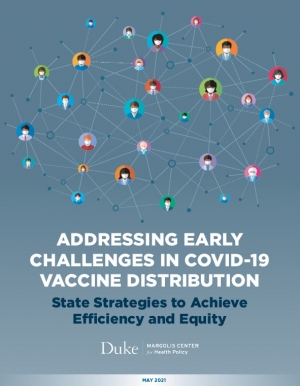
White Paper
Addressing Early Challenges in COVID-19 Vaccine Distribution: State Strategies to Achieve Efficiency and Equity
This white paper identifies how states sought to achieve the twin goals of vaccinating adults across the United States as quickly as possible while ensuring an equitable distribution process. States have overcome early challenges in vaccine distribution, having fully vaccinated 45 percent of U.S. adults and increasing daily administration of vaccines to over 2.1 million doses per day on average as of May 13, 2021. With the Biden Administration and states making every adult eligible for vaccination by April 19 and the Biden Administration’s goal of reaching 70 percent of the population with at least one dose of COVID-19 vaccine by July 4, understanding and incorporating key lessons learned from early experiences and promising practices for addressing key challenges is essential to prepare for the next phase of increasing uptake by the public. In February 2021, the Duke-Margolis Center for Health Policy convened senior officials from 20 states, leaders from state trade associations and federal officials to discuss challenges and lessons learned by state officials in the initial rollout of the national vaccine campaign. This white paper summarizes the promising practices raised at this convening and identifies operational strategies to improve the reach and equity of vaccine distribution in the weeks and months ahead. Figure 1 provides a snapshot of the strategies that will be addressed in more detail in this paper.

